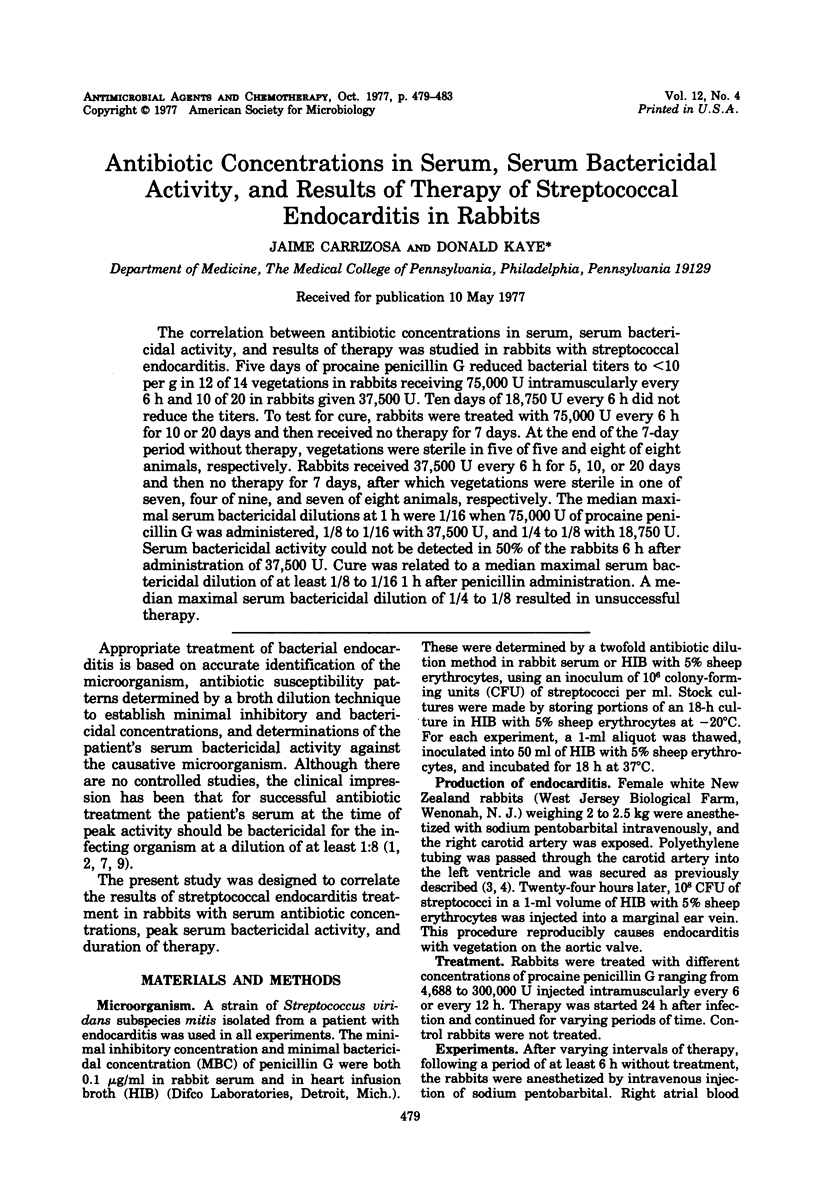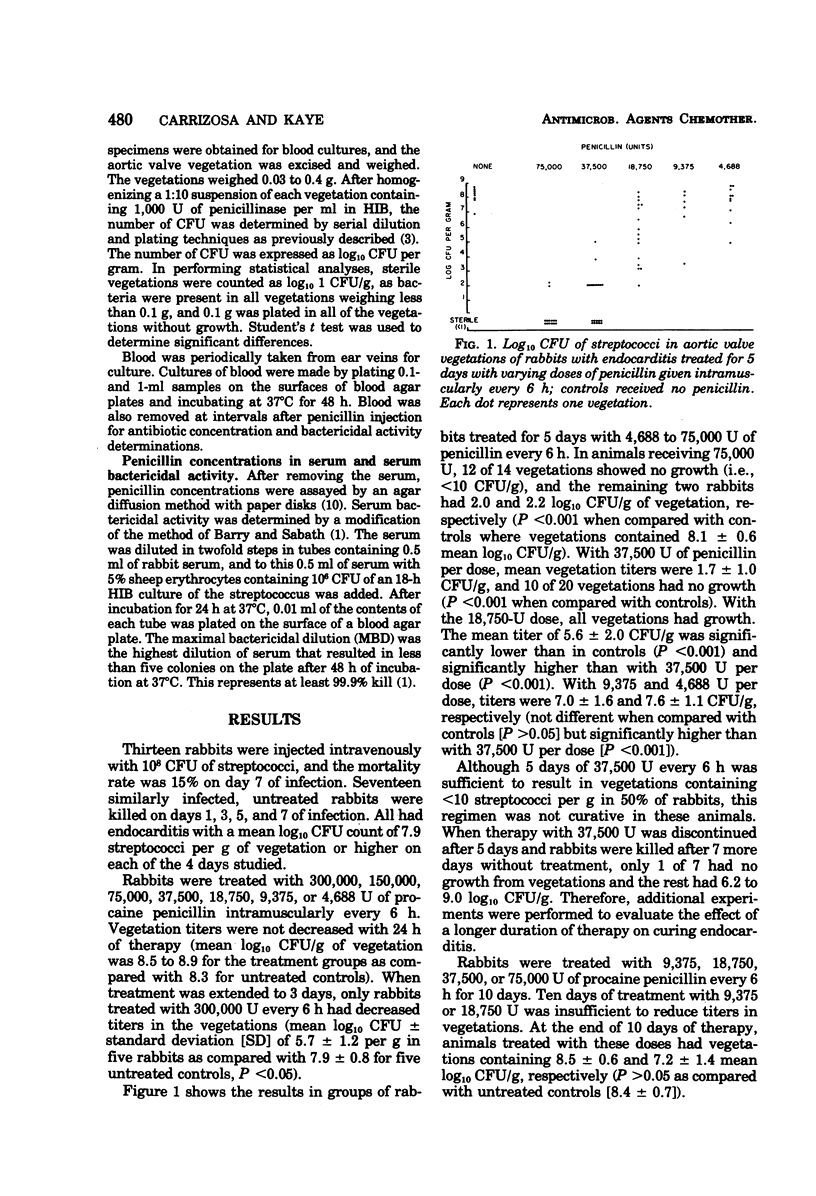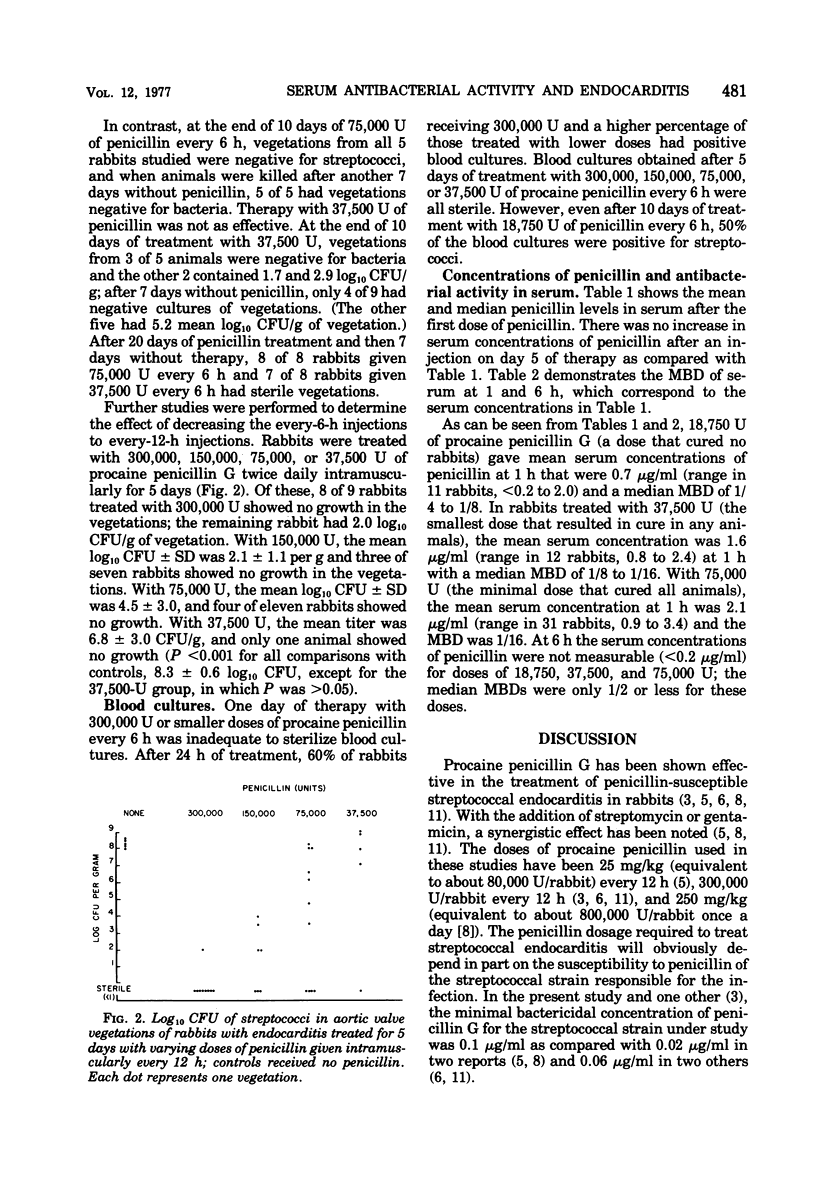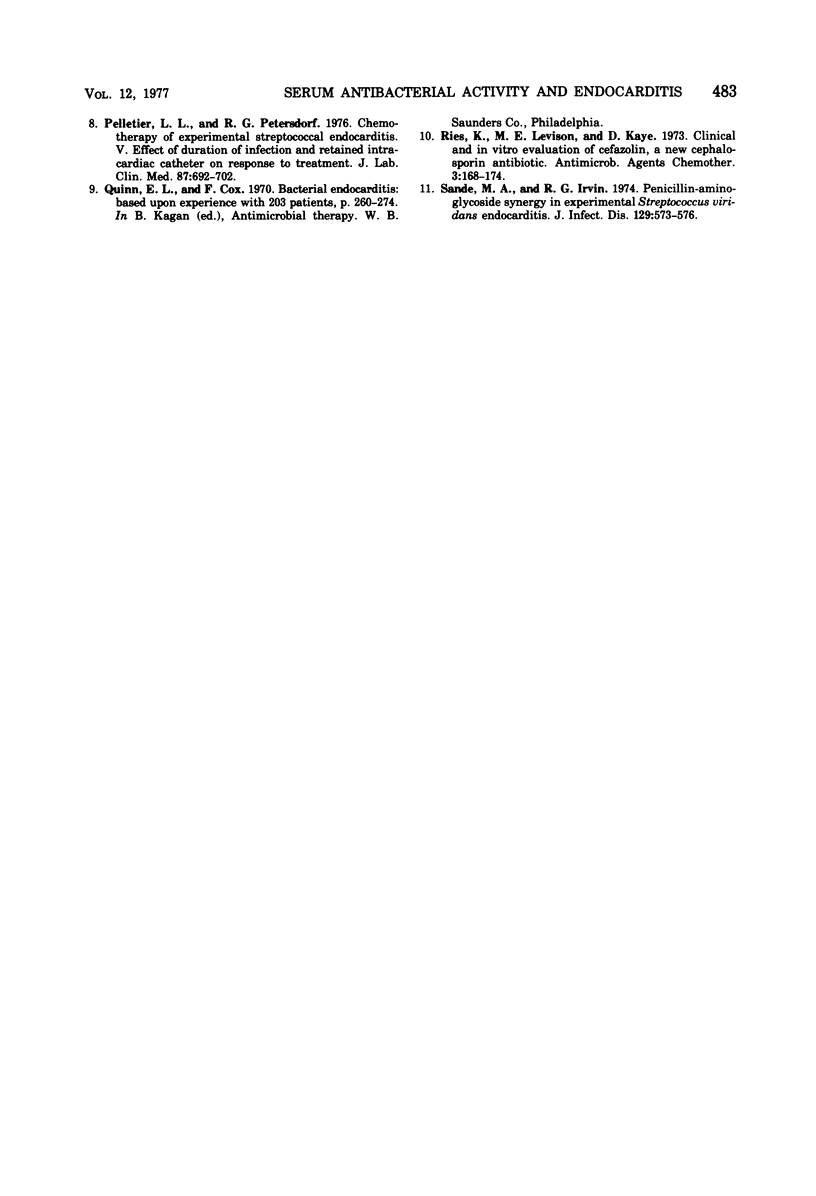Abstract
The correlation between antibiotic concentrations in serum, serum bactericidal activity, and results of therapy was studied in rabbits with streptococcal endocarditis. Five days of procaine penicillin G reduced bacterial titers to <10 per g in 12 of 14 vegetations in rabbits receiving 75,000 U intramuscularly every 6 h and 10 of 20 in rabbits given 37,500 U. Ten days of 18,750 U every 6 h did not reduce the titers. To test for cure, rabbits were treated with 75,000 U every 6 h for 10 or 20 days and then received no therapy for 7 days. At the end of the 7-day period without therapy, vegetations were sterile in five of five and eight of eight animals, respectively. Rabbits received 37,500 U every 6 h for 5, 10, or 20 days and then no therapy for 7 days, after which vegetations were sterile in one of seven, four of nine, and seven of eight animals, respectively. The median maximal serum bactericidal dilutions at 1 h were 1/16 when 75,000 U of procaine penicillin G was administered, 1/8 to 1/16 with 37,500 U, and 1/4 to 1/8 with 18,750 U. Serum bactericidal activity could not be detected in 50% of the rabbits 6 h after administration of 37,500 U. Cure was related to a median maximal serum bactericidal dilution of at least 1/8 to 1/16 1 h after penicillin administration. A median maximal serum bactericidal dilution of 1/4 to 1/8 resulted in unsuccessful therapy.
Full text
PDF




Selected References
These references are in PubMed. This may not be the complete list of references from this article.
- Bryan C. S., Marney S. R., Jr, Alford R. H., Bryant R. E. Gram-negative bacillary endocarditis. Interpretation of the serum bactericial test. Am J Med. 1975 Feb;58(2):209–215. doi: 10.1016/0002-9343(75)90571-9. [DOI] [PubMed] [Google Scholar]
- Carrizosa J., Kobasa W. D., Kaye D. Antagonism between chloramphenicol and penicillin in streptococcal endocarditis in rabbits. J Lab Clin Med. 1975 Feb;85(2):307–311. [PubMed] [Google Scholar]
- Durack D. T., Beeson P. B., Petersdorf R. G. Experimental bacterial endocarditis. 3. Production and progress of the disease in rabbits. Br J Exp Pathol. 1973 Apr;54(2):142–151. [PMC free article] [PubMed] [Google Scholar]
- Durack D. T., Pelletier L. L., Petersdorf R. G. Chemotherapy of experimental streptococcal endocarditis. II. Synergism between penicillin and streptomycin against penicillin-sensitive streptococci. J Clin Invest. 1974 Mar;53(3):829–833. doi: 10.1172/JCI107622. [DOI] [PMC free article] [PubMed] [Google Scholar]
- Hook E. W., 3rd, Sande M. A. Role of the vegetation in experimental Streptococcus viridans endocarditis. Infect Immun. 1974 Dec;10(6):1433–1438. doi: 10.1128/iai.10.6.1433-1438.1974. [DOI] [PMC free article] [PubMed] [Google Scholar]
- Pelletier L. L., Jr, Petersdorf R. G., Nielson K. Chemotherapy of experimental streptococcal endocarditis. V. Effect of duration of infection and retained intracardiac catheter on response to treatment. J Lab Clin Med. 1976 Apr;87(4):692–702. [PubMed] [Google Scholar]
- Ries K., Levison M. E., Kaye D. Clinical and in vitro evaluation of cefazolin, a new cephalosporin antibiotic. Antimicrob Agents Chemother. 1973 Feb;3(2):168–174. doi: 10.1128/aac.3.2.168. [DOI] [PMC free article] [PubMed] [Google Scholar]
- Sande M. A., Irvin R. G. Penicillin-aminoglycoside synergy in experimental Streptococcus viridans endocarditis. J Infect Dis. 1974 May;129(5):572–576. doi: 10.1093/infdis/129.5.572. [DOI] [PubMed] [Google Scholar]


